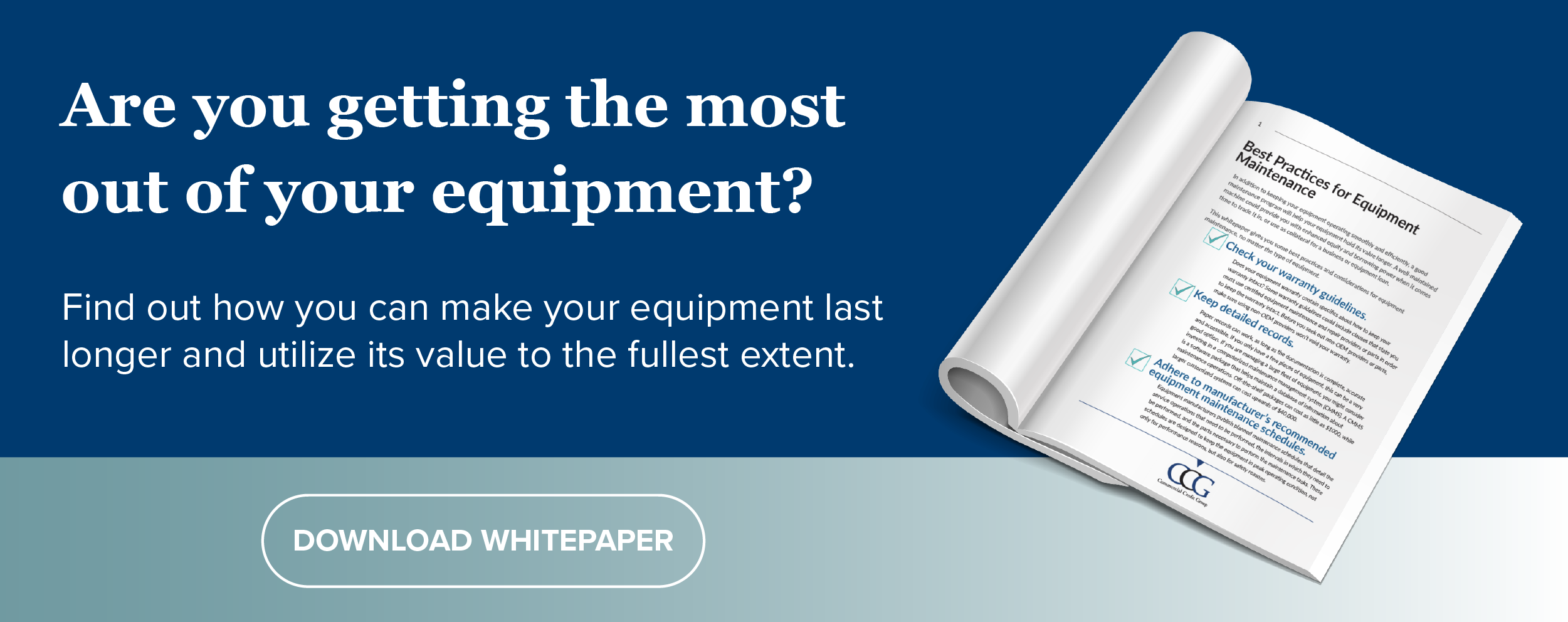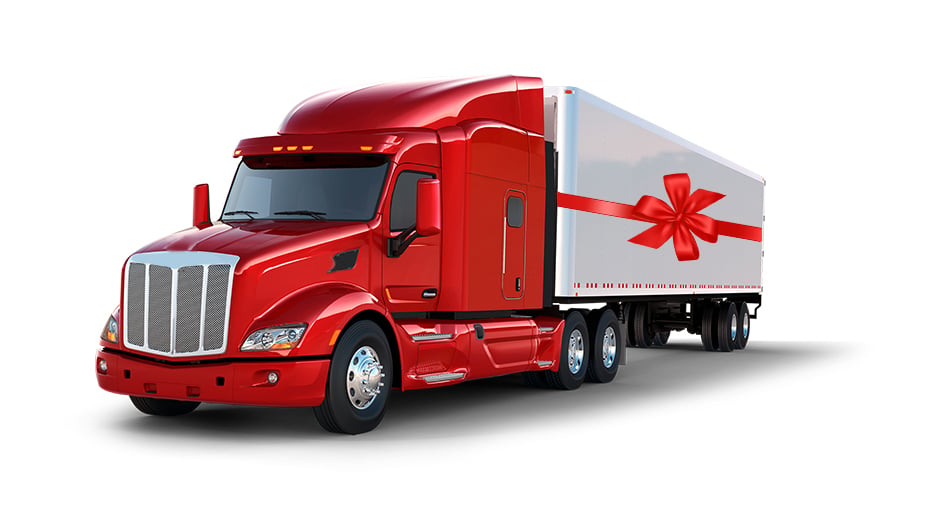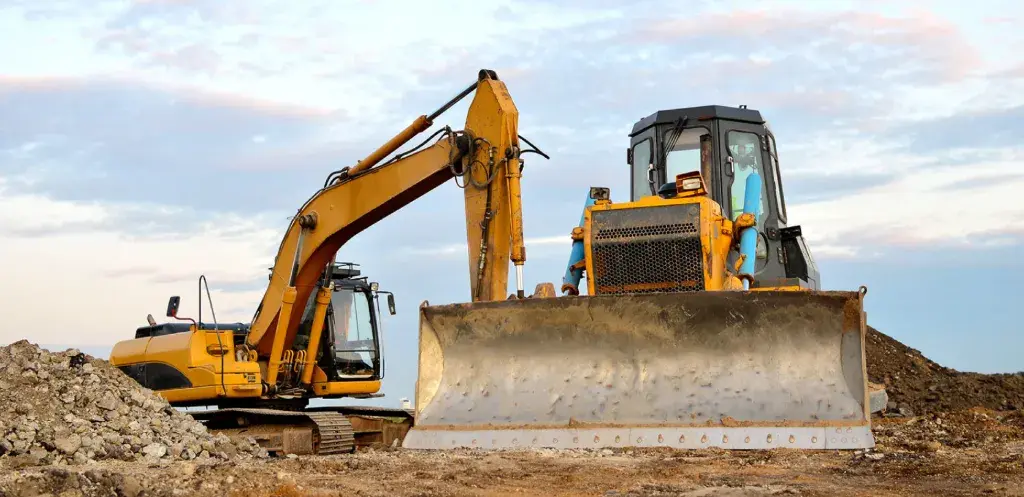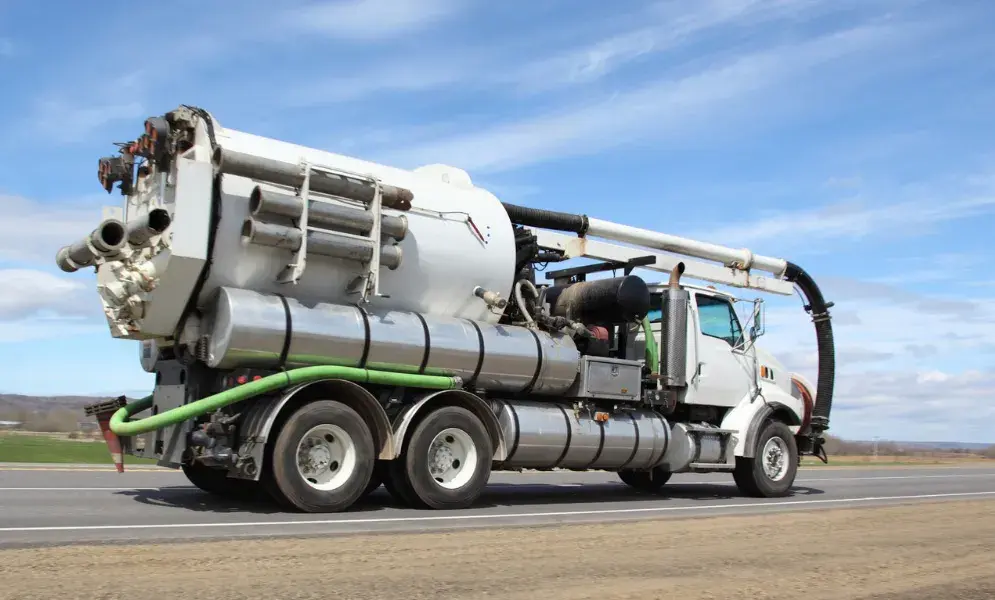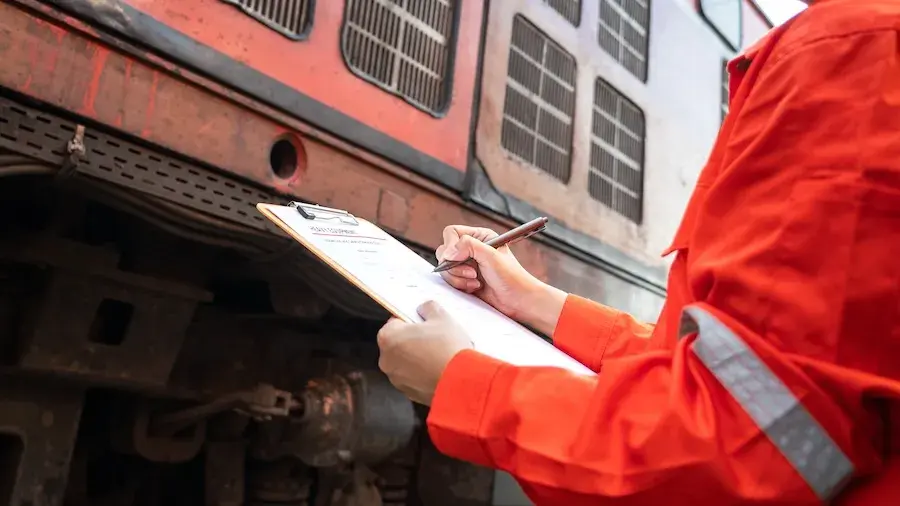In addition to keeping your equipment operating smoothly and efficiently, a good maintenance program will help your equipment hold its value longer. A well-maintained machine could provide you with enhanced equity and borrowing power when it comes time to trade it in, or use as collateral for a business or equipment loan.
This whitepaper gives you some best practices and considerations for equipment maintenance, no matter the type of equipment.
Check Your Warranty Guidelines
Does your equipment warranty contain specifics about how to keep your warranty intact? Some warranty guidelines could include clauses that state you must use certified equipment maintenance and repair providers or parts in order to keep the warranty intact. Before you seek out non-OEM providers or parts, make sure using non-OEM providers won’t void your warranty.
Keep Detailed Records
Paper records can work, as long as the documentation is complete, accurate and accessible. If you only have a few pieces of equipment, this can be a very good option. If you are managing a large fleet of equipment, you might consider investing in a computerized maintenance management system (CMMS). A CMMS is a software package that helps maintain a database of information about maintenance operations. Off-the-shelf packages can cost as little as $1000, while larger customized systems can cost upwards of $40,000.
Adhere to Manufacturer's Recommended Equipment Maintenance Schedules
Equipment manufacturers publish planned maintenance schedules that detail the service operations that need to be performed, the intervals in which they need to be performed and the parts necessary to perform the maintenance tasks. These schedules are designed to keep the equipment in peak operating condition, not only for performance reasons, but also for safety reasons.
Inspect the Equipment on a Regular Basis
Despite adherence to the regularly scheduled maintenance, wearable parts can become worn or damaged, simply through use, especially heavy use or adverse conditions. Inspecting belts, hoses, tires and other parts on a regular basis can identify signs of wear and tear – holes, fraying, leaks – enabling you to replace them before they break or fail.
Involve the Operators or Drivers in the Equipment Maintenance Program
The people who operate or drive the equipment on a regular basis tend to be the closest to the equipment. They know how each individual machine runs and can often tell when the machine is “acting up”. Inspections by the operators before and after each shift are perfect opportunities to find and identify issues before they become big problems.
Inspect the Space Around the Equipment
Oftentimes a mere inspection of the equipment itself won’t turn up a problem. Think of a slow fluid leak. Merely looking at the inside of the machine, or the fluid tank itself, may not identify a leak. But if you look at the floor underneath the machine, you may see a wet spot where fluid has been leaking. (How many times have you discovered an oil leak in a car because the driveway or garage had an oil stain on it?) This is really important if the piece of equipment remains in one spot (think of a machine tool) because a wet spot on the floor may not be readily noticed.
Keep a Stock of Often-replaced Parts On-hand
Having a few of the often-replaced parts on hand means you don’t have to wait for your supplier to get parts to you. Especially if you are conducting regular inspections of the equipment, having spare parts on hand enables you to replace them as needed, rather than having to wait for a delivery. Yes, waiting a day or two for a delivery is not a problem if you’ve discovered the need for replacement before a breakdown. But if the machine has broken down, that one or two days could have severe negative impact on your bottom line.
Understand the Costs of Your Equipment Maintenance Program
At some point, the cost of maintenance and repair for equipment, will surpass that of the value or debt service of the equipment. Understanding the costs of maintenance will help you determine when it’s time to replace a piece of equipment.
Proper equipment maintenance is critical to keeping your machines running safely and at peak performance. Additionally, proper maintenance helps improve the longevity of the equipment and helps it maintain its value. At some point however, it comes time to purchase new equipment. When that time comes, CCG can help you obtain the commercial equipment financing you need to make that purchase. Even if you don’t need to purchase new equipment, the equipment you do have could be used to obtain a cash-out loan for general operating expenses.
Contact the experts at CCG to discuss how you can put your equipment to work for you.
To understand how equipment maintenance relates to equipment financing, read our blog post, The Importance of Equipment Maintenance & How it Affects Financing, and subscribe to our blog for notifications on future postings.
You may also download the free whitepaper to keep this handy for your team:
